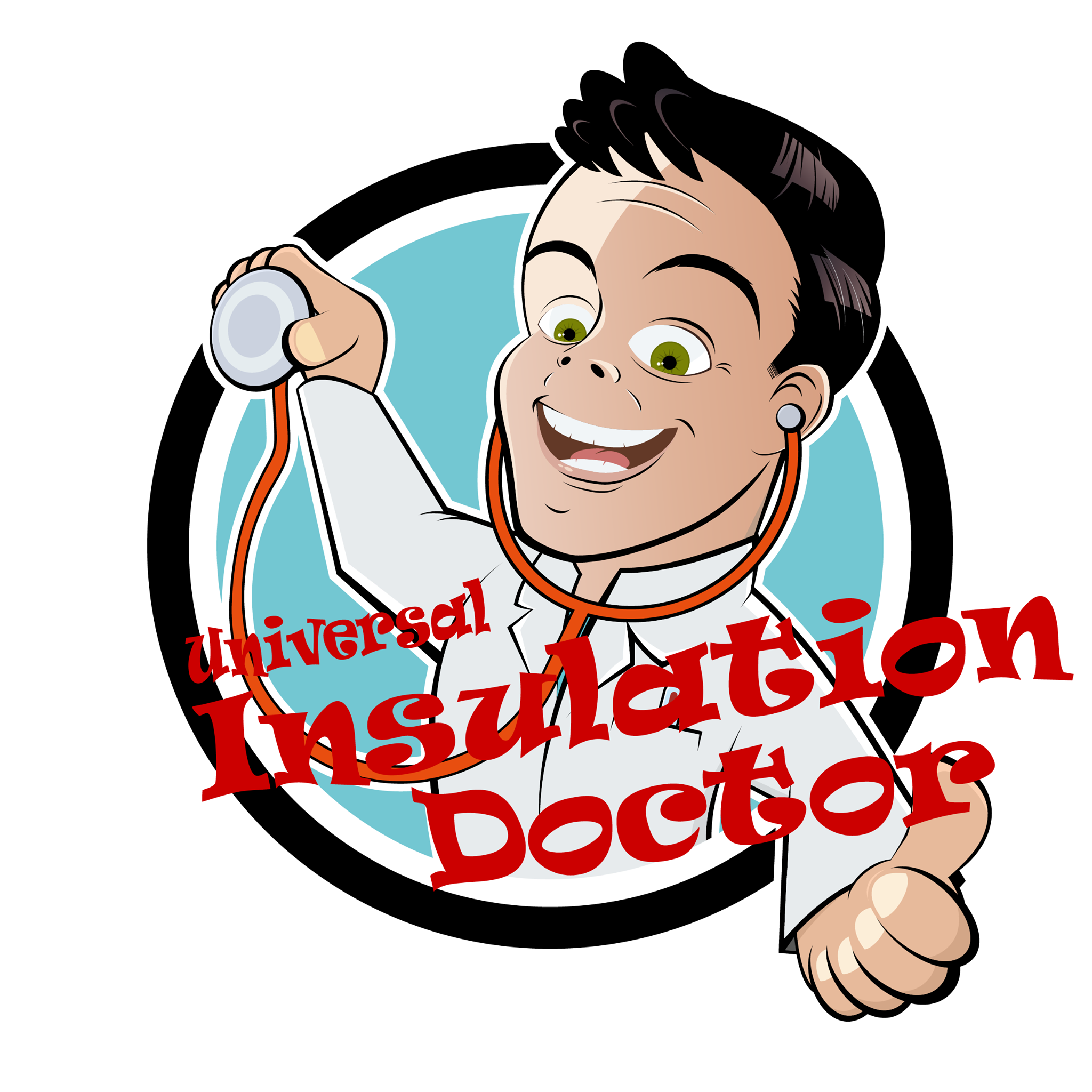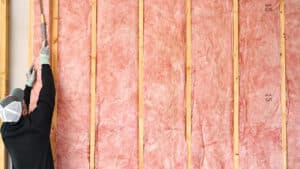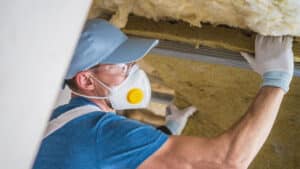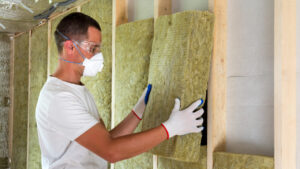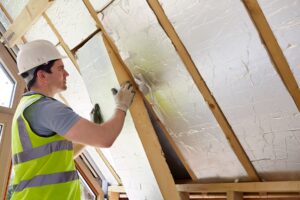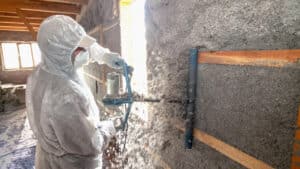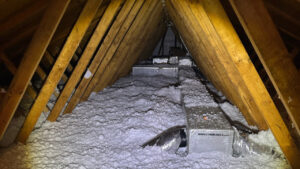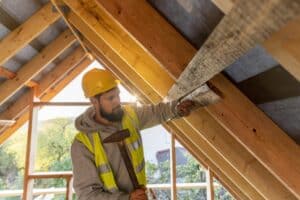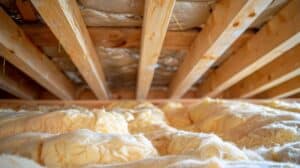As homeowners in Hampton Roads, maintaining adequate insulation in your home is non-negotiable; it’s a must.
Quality home insulation influences not just thermal comfort but also energy efficiency and overall house durability. Recognizing the signs of insulation damage and knowing when to repair or replace it can save you from costly energy bills and unexpected repair costs.
So, to extend your insulation lifespan and make wise homeowner choices, keep reading for practical and professional advice.
Understanding the Importance of Proper Insulation
Home insulation is crucial in Hampton Roads due to several reasons that directly impact comfort, energy efficiency, and overall well-being. Hampton Roads, located in southeastern Virginia, experiences a climate with both hot and humid summers and cool winters.
Some homeowners need to pay more attention to insulation’s role in maintaining ideal living conditions. Poorly handled insulation can be an unseen problem, contributing to elevated energy consumption.
Proper insulation helps regulate indoor temperatures, reducing the strain on heating and cooling systems. This, in turn, leads to lower energy bills and a smaller environmental footprint. Additionally, well-insulated homes in Hampton Roads provide better protection against moisture, preventing issues like mold and rot.
Repairing or replacing insulation requires a keen understanding of your home and its needs. It’s about elevating your home’s economic performance and fostering a healthier living environment. When people comprehend the weight of insulation’s role, it translates into making more sensible decisions about repair or replacement with an energy-efficient insulator.
Perhaps you’re wondering about renovations and additions for home insulation. Here is our article that could help you with this. Read: “Insulation Considerations for Renovations and Home Additions”
Signs of Damaged or Failing Insulation
Proper insulation is a cornerstone of energy efficiency and home comfort, yet it is often overlooked. Signs of damaged or failing insulation can manifest in various ways, affecting both the well-being of your home and your energy bills.
High Energy Bills
One of the most noticeable signs of failing insulation is a sudden spike in energy bills. Poorly insulated homes struggle to regulate indoor temperatures, leading to increased reliance on heating and cooling systems. As a result, these systems work overtime, consuming more energy to maintain a comfortable environment. Monitoring your energy bills and noting unexplained increases can be an early warning that your insulation may be compromised.
Drafts and Temperature Inconsistencies
Another clear indication of insulation problems is the presence of drafts and difficulty maintaining consistent indoor temperatures. Inadequate insulation allows outside air to infiltrate the home, causing drafts that can make certain areas uncomfortably cold or hot. Rooms may feel unevenly heated or cooled, and the thermostat may need constant adjustments to achieve a comfortable balance. Identifying and addressing these inconsistencies is crucial for maintaining a cozy living environment.
Visible Damage
Visibly damaged insulation is a straightforward sign of trouble. Insulation materials, such as fiberglass or foam, may degrade over time due to factors like moisture, pests, or simple wear and tear. Check for any visible signs of deterioration, such as discoloration, sagging, or compression. Damaged insulation not only compromises its effectiveness but can also lead to more significant issues like mold growth.
Pest Infestations
Insulation deterioration can create an inviting environment for pests. Rodents, insects, and other unwelcome guests critters notice increased pest activity or find signs of infestation, it could indicate that your insulation needs attention.
Moisture Issues
Insulation compromised by leaks or inadequate vapor barriers can lead to moisture problems. Excess moisture can result in mold growth, affecting indoor air quality and posing health risks. Stains on walls or ceilings and a musty odor can signal moisture-related issues caused by failing insulation.
Spotting the Common Locations for Insulation Issues
The attic, typically a common location for insulation issues, often serves as your first checkpoint. This is where most temperature swings and damaged or worn-out insulation often happen. The attic is always overlooked, so if you experience drooping or sagging insulation, it’s time to check out what’s happening up there. To help you with this insulation issue, hiring an insulation company like Universal Insulation Doctor can be a great idea. We, as a team of professionals, can examine your attic, joists, and any other crawl spaces and fix any problems with your insulation to keep your home cozy.
Another location is the spaces between wall studs and floor beams, which commonly hold insulation issues. Amid seals tightly locked within concrete blocks, issues often grow unseen until they march into daylight. Maintenance demands casting a keen eye and readiness to address unseen issues lingering behind walls or beneath floors.
The lowly crawl space or basement, often left in shadows, can harbor insulation complications. It might seem unimportant compared to the rest of the home, yet leaving it unchecked often results in unwanted temperature flux and air leaks. Ignoring these spaces can lead to pronounced insulation challenges. Adding an energy-efficient insulation material can help prevent these issues.
Windows and doors might seem like unconventional targets, but they’re often troubled spots for insulation. When improperly sealed, they can compromise energy efficiency or invite unwelcome pests.
Effects of Insulation Damage on Your Hampton Roads Home
In Hampton Roads, where the climate can be both hot and humid in the summer and chilly in the winter, the importance of proper insulation cannot be overstated, however, when insulation becomes damaged, whether due to age, pests, or other factors, it can have a range of detrimental effects on your home.
One of the most noticeable effects of insulation damage is compromised indoor comfort. In the hot and humid summers of Hampton Roads, damaged insulation can allow heat to penetrate the home, making it harder for air conditioning systems to maintain a cool and comfortable indoor temperature. Conversely, during the chilly winters, compromised insulation can result in heat loss, forcing heating systems to work harder and increasing energy consumption. This not only diminishes the comfort of living spaces but also puts additional strain on HVAC systems, potentially leading to higher maintenance costs and a shortened lifespan.
Beyond comfort issues, insulation damage can also wreak havoc on energy bills. A well-insulated home is more energy-efficient, as it helps regulate indoor temperatures, reducing the need for constant heating or cooling. When insulation is damaged, the home becomes less efficient, requiring more energy to maintain a comfortable environment. This increased energy consumption translates to higher utility bills, placing an unnecessary financial burden on homeowners.
In a region like Hampton Roads, where the climate can be demanding, addressing insulation damage promptly is essential to mitigate these effects and ensure a comfortable and cost-effective living space. Regular inspections and timely repairs are crucial to preserving the integrity of insulation and, consequently, the overall well-being of homes in the Hampton Roads area.
Tips on Choosing the Right Insulation for Your Hampton Roads Home
Selecting the appropriate insulation for your Hampton Roads home is a critical decision that can significantly impact your comfort and energy efficiency. The region’s diverse climate, with hot and humid summers and chilly winters, necessitates insulation that effectively regulates indoor temperatures. Whether you are considering insulation repair or replacement, understanding the options available and their suitability for your specific needs is paramount. Here are some tips for choosing the proper insulation for your Hampton Roads home.
Consider the Climate:
- – Hampton Roads experiences a climate that combines high temperatures with humidity in the summer and cool temperatures in the winter. Opt for insulation materials that provide effective thermal resistance (R-value) to combat heat and cold.
- – Reflective insulation, such as radiant barriers, can be beneficial in deflecting the sun’s radiant heat during the summer, helping to keep your home cooler.
Material Options:
- – Fiberglass insulation is a common and cost-effective choice. It is known for its thermal performance and is suitable for various spaces.
- – Rock wool insulation offers excellent thermal resistance and effectively seals gaps and cracks. It’s beneficial for attics and crawl spaces, providing a durable and fire-resistant option for insulating these areas in your home. Because it is a mineral wood insulation it typically doesn’t provide materials that pests would willingly choose to nest in.
- – Cellulose insulation, made from recycled paper, is an eco-friendly option with good thermal properties. It can be a suitable choice for both new installations and retrofits.
- – If you have persistent insect problems we recommend Pest Insulation Guard, our proprietary cellulose insulation with added borate which helps prevent insects from settling into your home again.
Moisture Resistance:
- Given the humidity in Hampton Roads, it’s crucial to consider insulation materials that resist moisture. Moisture-resistant options such as closed-cell spray foam or foam board insulation can help prevent mold and mildew growth.
Installation and Maintenance:
- Professional installation is vital to the effectiveness of insulation. Ensure that the chosen insulation material is installed correctly to maximize its performance.
- Regular maintenance and inspections can identify any issues with insulation, allowing for timely repairs or replacements to maintain peak efficiency.
Energy Efficiency:
- Select insulation with a high R-value to optimize energy efficiency in heating and cooling seasons. This will help reduce utility costs and environmental impact.
Choosing the proper insulation for your Hampton Roads home involves careful consideration of climate, materials, moisture resistance, and energy efficiency. By taking these factors into account, you can ensure that your home remains comfortable year-round while keeping energy costs in check.
Our High-Quality Home Insulation Services
At Universal Insulation Doctor, we recognize the importance of maintaining efficient insulation in your home. Our professional insulation services are crafted to enhance the comfort and energy efficiency of your living spaces. For years, our dedicated teams have been champions of safeguarding the well-being of homeowners across Hampton Roads, offering a comprehensive range of services to ensure your insulation remains in optimal condition.
Our unwavering commitment to excellence is at the core of everything we do. We invest substantially in our team, ensuring they have the expertise to deliver top-tier services to every valued customer. Distinctively, we stand out as the leading insulation services provider offering prompt and efficient next-day service!
Ready to elevate your living environment and prioritize energy efficiency? The time for action is now! Reach out to Universal Insulation Services today and schedule a professional insulation service. Dial (757) 962-0419 and experience the transformative difference expertise makes!
If you want to learn more about the inflation reduction act for insulation and air sealing, click this link!
Frequently Asked Questions
1. How can I tell if my home needs insulation repair or replacement?
Look for signs such as fluctuating indoor temperatures, increased energy bills, or visible damage to insulation materials. A professional inspection can provide a comprehensive assessment.
2. Are there specific areas in my Hampton Roads home more prone to insulation damage?
Yes, areas like the attic and crawl spaces are commonly susceptible. Inspect these spaces for signs of wear, water damage, or pest infestations that may warrant repair or replacement.*
3. What are common indicators of insulation damage in the Hampton Roads climate?
In Hampton Roads, look for mold growth, moisture accumulation, or pest infestations. These issues can compromise insulation effectiveness and signal the need for repair or replacement.
4. Can damaged insulation impact indoor air quality in my Hampton Roads home?
Yes, damaged insulation can lead to poor indoor air quality by allowing allergens and pollutants to enter. Addressing insulation issues promptly can contribute to a healthier living environment.
5. How often should I have my insulation inspected in Hampton Roads?
It’s advisable to have your insulation inspected annually, especially before extreme weather seasons. Regular inspections can catch issues early and prevent the need for extensive repairs or replacements.
